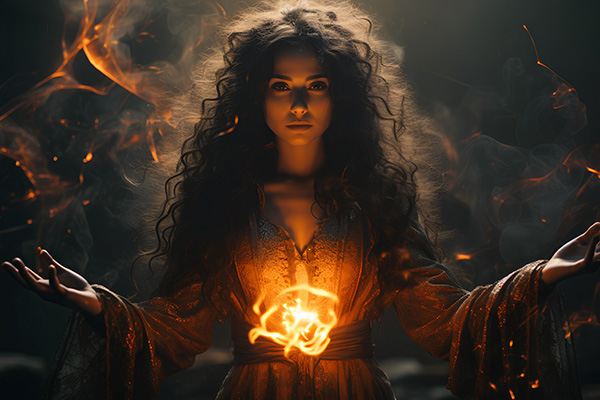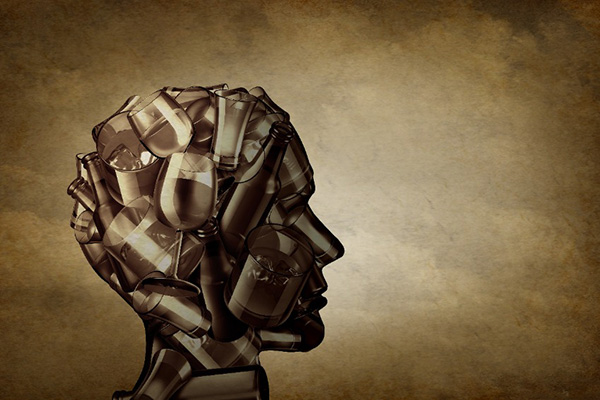witchcraft
The History And Hidden Blessings Of Halloween

As a child, I remember getting excited about dressing up as a witch on Halloween and enjoying all the treats, like toffee apples and spooky cakes, that my mom used to make.
But one year, my father ruined the holiday for me when he explained his views on the significance of Halloween to me. I was just 10 years old, and it upset me.
Because of his religious beliefs, my father then forbade my siblings and me from celebrating Halloween. This made us feel excluded from our community as we watched other children dress up and enjoy themselves.
As an adult, I learned that it was not the event itself that was the issue, but rather the assumed F.E.A.R. behind it: False Evidence Appearing Real.
Remembering those times recently, I was prompted to take another look into the origin of this holiday tradition and what it truly stands for.
On 31st October each year, the Celtic pagan festival known as Samhain is celebrated, symbolizing the end of the harvest period and the start of the winter season, sometimes referred to as the “darker half” of the annual 12-month cycle.
Long before it became a night of costumes and candy, it was a sacred festival rooted in ancient spiritual tradition. The celebration we now know as Halloween traces its origins to Samhain (pronounced Sow-in), a Gaelic festival that marked the end of the harvest and the beginning of the dark half of the year.
The Cautionary Tale Of The Lovestruck Witch
 Once upon a time, there was a goodly witch named Wanda. Though she sometimes had a fiery temper, her heart was generally in the right place.
Once upon a time, there was a goodly witch named Wanda. Though she sometimes had a fiery temper, her heart was generally in the right place.
For many years, Wanda lived a cozy life with her partner, Colwyn the Brave, in a happy and fulfilling relationship.
But one day, out of the blue, Colwyn announced that he was ending the relationship. Although he still loved Wanda, he explained that he no longer had the romantic or emotional feelings necessary to sustain the relationship.
But Wanda was no fool. Fee-fi-fo-fum, she knew by the prick of her thumb…that he was lying through his teeth! The truth was that he had decided to dump her for her so-called best friend, Suvanna the Enchantress.
Wanda was devastated. She had dedicated more than two decades of her life to this man, standing by him through thick and thin. And her friend’s betrayal only added further insult to injury.
Realizing the extent of the pain he had caused, Colwyn tried to comfort Wanda, assuring her that one day she would meet someone who would make her much happier than he ever had.
But his words fell on deaf ears. Wanda was heartbroken and very, very angry.
Then she remembered…she was a witch. She could make things happen, especially with the help of her sisterhood of witches.
The Magic Of Dowsing Stands The Test Of Time
 Dowsing, also known as “divining” or “water witching,” is an ancient practice that uses a tool such as a pendulum or divining rod to locate what is hidden, most commonly underground water, minerals, or lost items. it is also a divination method used to tap into the unseen or mystical to gain spiritual, psychic, or energetic insights.
Dowsing, also known as “divining” or “water witching,” is an ancient practice that uses a tool such as a pendulum or divining rod to locate what is hidden, most commonly underground water, minerals, or lost items. it is also a divination method used to tap into the unseen or mystical to gain spiritual, psychic, or energetic insights.
While skeptics dismiss it as pseudoscience, dowsing has persisted in many cultures for thousands of years, standing the test of time as a mysterious blend of mysticism and physics. I believe its continued presence throughout history speaks to its importance and continued relevance in today’s technological society.
Dowsing has ancient roots dating back thousands of years, although its exact historical beginnings remain uncertain. Archaeological evidence suggests that the practice dates back to ancient Egypt and China, where early civilizations used rudimentary dowsing techniques to locate water and minerals. Cave paintings in North Africa from around 8000 B.C. depict people holding forked sticks, which many experts believe may be dowsing rods.
The ancient Greeks and Romans were also familiar with dowsing, especially for locating underground water sources. They considered the dowsing rod or pendulum a sacred tool capable of tapping into hidden energies. It was believed that certain materials, especially wood or metal, could act as conduits for detecting invisible forces in the earth.
In the Middle Ages, dowsing became more widely practiced in Europe, often by miners searching for metal veins, especially during the mining booms in Germany and England. However, due to its inexplicable, mystical nature, dowsing also increasingly became associated with the occult and witchcraft, leading to its condemnation by the church.
Honor Your Pagan Heritage This Halloween
 Samhain holds special significance for those who practiced paganism in a past life, especially those who were involved in magical practices as seers, soothsayers, druids, and witches.
Samhain holds special significance for those who practiced paganism in a past life, especially those who were involved in magical practices as seers, soothsayers, druids, and witches.
For us, this time of year evokes a deep sense of nostalgia, spiritual reorientation, and a return to ancient wisdom as the veil between worlds thins and we reconnect with our ancestors and the spirit realms.
Samhain is an ancient Celtic festival marking the end of the harvest season and the beginning of winter, traditionally celebrated from October 31 to November 1. It is one of the four great Gaelic seasonal festivals, along with Imbolc (February 1), Beltane (May 1), and Lughnasadh (August 1).
In Celtic tradition, Samhain (pronounced “sow-in”) is a liminal time when the boundary between the physical and spiritual worlds is thinner, allowing the spirits of our deceased loved ones, ancestors, and other spirits to cross over more easily.
In ancient times people would light fires and wear costumes to ward off harmful spirits, while also honoring their ancestors with offerings of food and drink.
Samhain is considered the origin of modern Halloween traditions, although Halloween has evolved and incorporated elements from other cultures to become a mostly secular and commercial holiday. For Neopagans and Wiccans, Samhain remains an important festival for honoring the dead, celebrating the cycle of life, death, and rebirth, and connecting more deeply with the spirit realm.
How To Use A Wand In Your Energy Work
 It is not widely known that a magic wand is so much more than a mere fantasy accessory in popular stories like the Harry Potter series andThe Chronicles of Narnia.
It is not widely known that a magic wand is so much more than a mere fantasy accessory in popular stories like the Harry Potter series andThe Chronicles of Narnia.
While popular culture has certainly cast wands in a fun, magical light, their true potential as metaphysical tools in real-world spiritual and energy work is less known and mostly underestimated.
Far from being a fictional artifact, a wand has traditionally served as a conduit for directing intention and channeling energy. When used with respect and purpose, a “magic” wand can be a vital tool in one’s metaphysical practice.
I view my wand as an energy tool to harness and direct intention as a means to bring about change in myself, another person, a pet, or a situation. Whether I’m working directly with someone in a healing session or using it remotely with a photo or personal object, my wand helps me focus healing energy to address blocks, wounds, or even negativity.
In a healing session, I use the wand to direct energy to where it’s needed most. This may mean helping someone release emotional blocks, alleviate physical pain, or transform negative energy.
Wands have a rich history in various cultures and have been used in many ancient civilizations. In ancient Egypt, for example, staffs and wands were used by priests and deities as symbols of authority and power. These objects were decorated with mystical symbols and believed to have protective and healing properties. Similarly, in Mesopotamia, priests and shamans used wands in religious rituals and ceremonies.
The True Spiritual Meaning Of The Pentagram
 Perhaps no other spiritual or religious icon is as misunderstood as the pentagram, or pentacle. The true symbolism of the pentagram, a five-pointed star often surrounded by a circle, is commonly misrepresented.
Perhaps no other spiritual or religious icon is as misunderstood as the pentagram, or pentacle. The true symbolism of the pentagram, a five-pointed star often surrounded by a circle, is commonly misrepresented.
Contrary to popular misconceptions that associate it with darkness, evil, or Satanism, the pentagram has multiple meanings within various spiritual and religious traditions, most notably within Paganism and modern Wicca.
The pentagram has been a spiritual symbol of significance for millennia, long before its association with modern religious movements.
Historically, it has been used by cultures around the world, often to represent celestial bodies, principles of harmony, or mystical concepts. Its use first appeared in ancient Greece and Mesopotamia around the 1st millennium BC.
It is not widely known that there are significant historical connections between the pentagram and Christianity. Prior to the widespread use of the cross, the pentagram was a popular symbol to adorn the jewelry and amulets of early Christians, often alongside an “X” or a phoenix. This symbol was associated with the five wounds of Christ and also represented the concept of Alpha and Omega united, as the star could be drawn in one continuous movement of the pen.
In contemporary contexts, particularly within Wicca and related neo-pagan belief systems, the pentacle has positive connotations. It’s seen as a symbol of protection, spirituality, and the interconnectedness of the elements. Each point of the star represents an aspect of balance, holistic existence, conscious living, and the cyclical nature of life.
